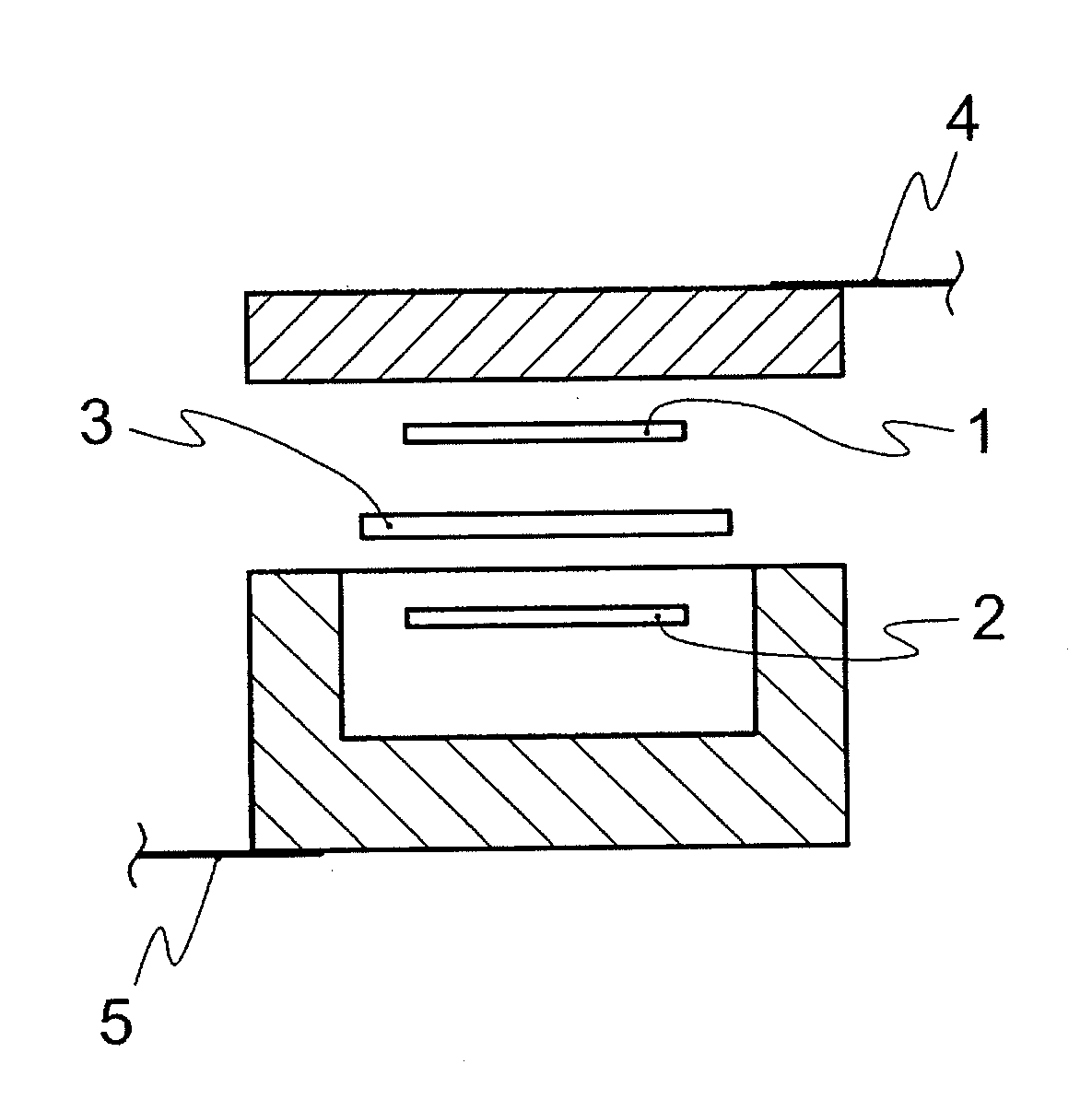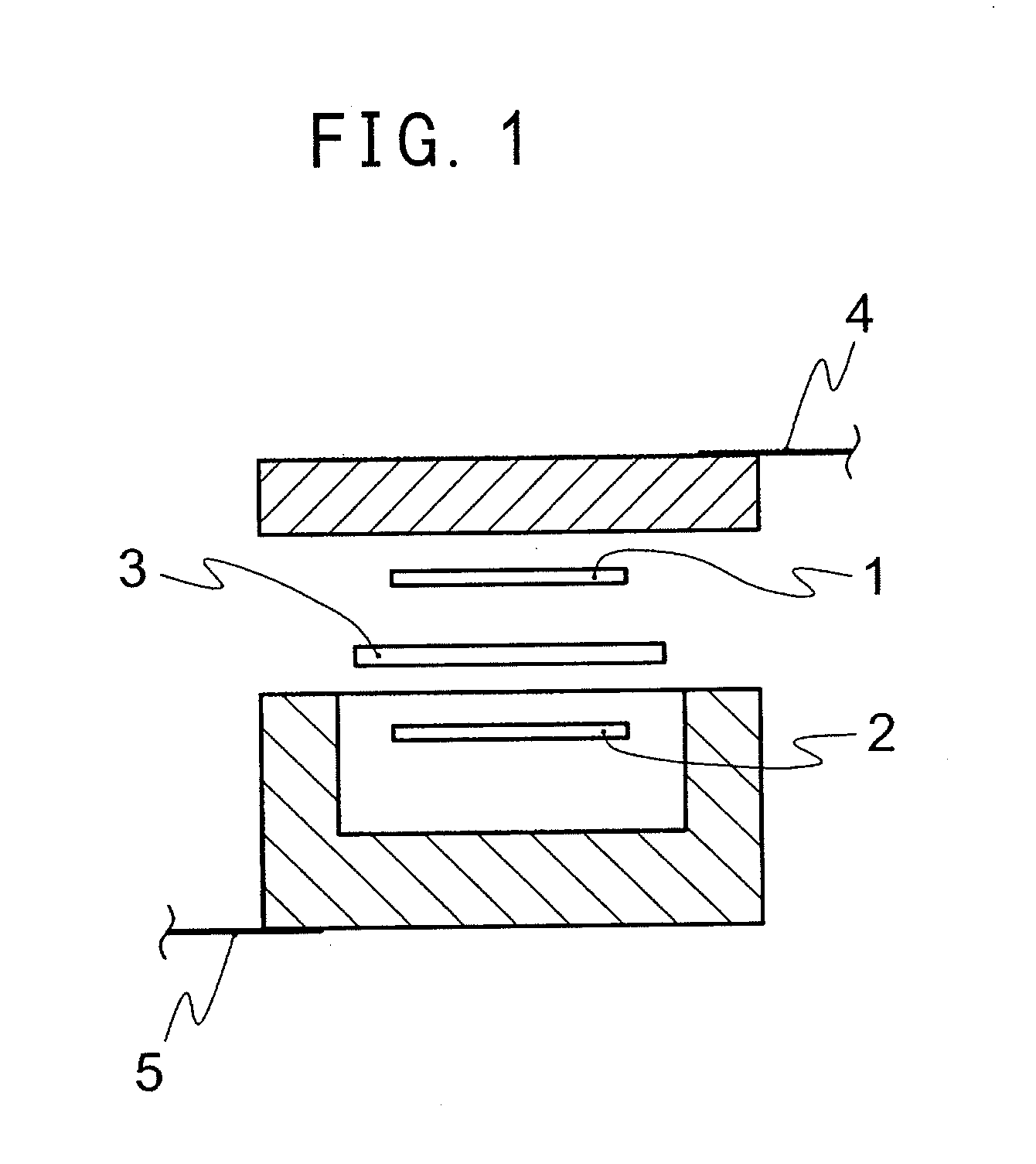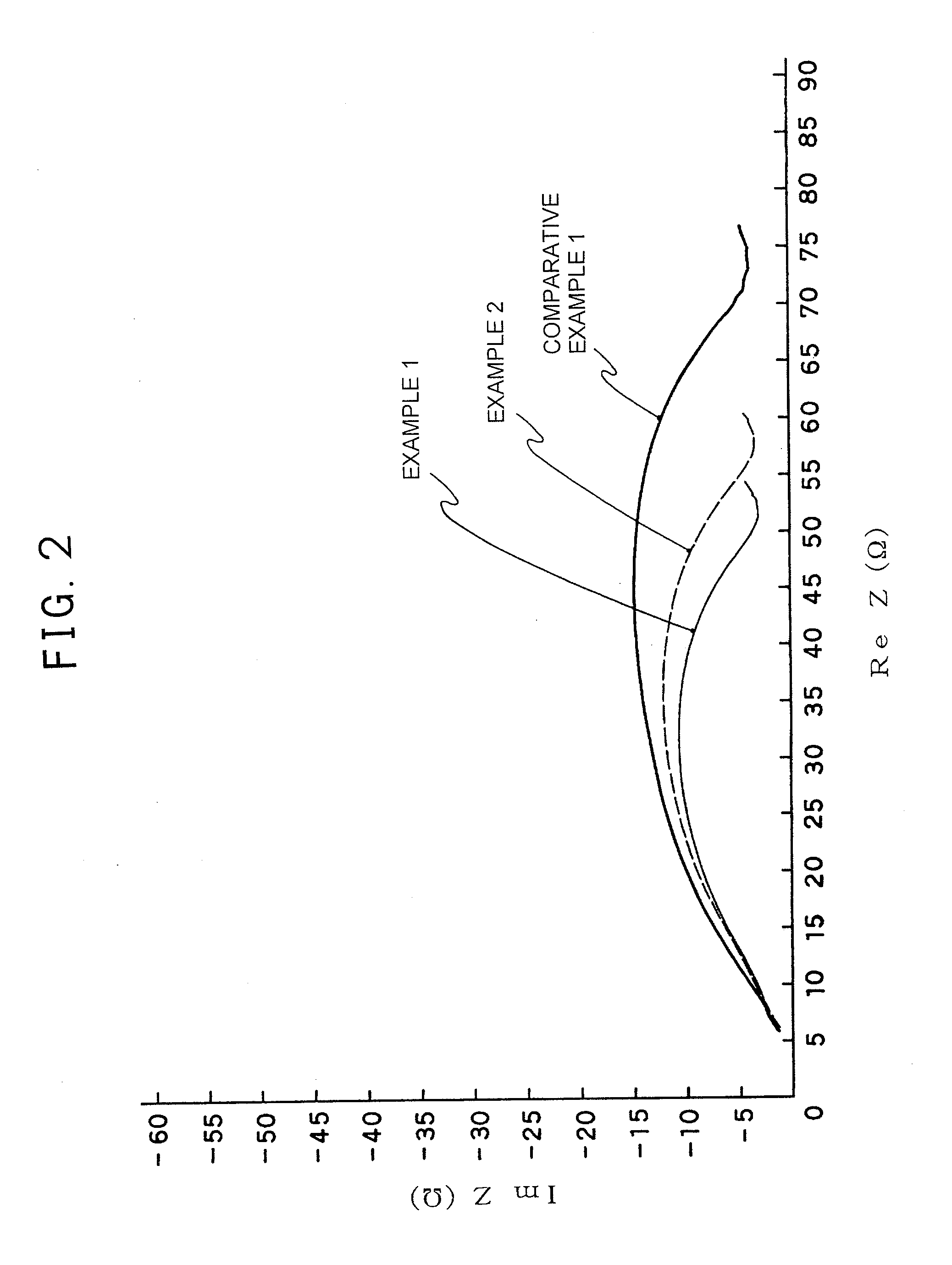Solvent for dissolving electrolyte salt of lithium secondary battery
a lithium secondary battery and solution technology, applied in the direction of dissolving, non-aqueous electrolyte cells, cell components, etc., can solve the problems of lowering short circuit and firing, and negative electrode surface, etc., to achieve excellent discharge capacity, rate characteristic and cycle characteristic, and enhanced incombustibility. , the effect of safety
- Summary
- Abstract
- Description
- Claims
- Application Information
AI Technical Summary
Benefits of technology
Problems solved by technology
Method used
Image
Examples
synthesis example 1
Synthesis of 1,2-Dimethyl-1,2-Difluoroethylene Carbonate
[0117]Reaction was carried out using a 3-liter SUS stainless steel autoclave. Into a reactor were added 2,3-butanedion (300 g, 3.48 mol) of the formula:
pyridine (138 g, 1.74 mol) and dichloromethane (1 liter), followed by stirring. Then, carbonyl difluoride of the formula:
was introduced at room temperature at 0.1 to 0.5 MPa. It was confirmed that the reaction was followed by heat generation up to 46.2° C. Thereafter, introduction of carbonyl difluoride was continued until heat generation and decrease of pressure could not be recognized, and proceeding of the reaction was traced with GC. After confirming that 2,3-butanedion as the starting material had disappeared, the reaction was terminated. After completion of the reaction, carbonyl difluoride remaining in the system was purged and then the following post-treatment was carried out. First, the reaction solution was subjected to quenching several times with 1-liter of pure wate...
synthesis example 2
Synthesis of 1,2-Diethyl-1,2-Difluoroethylene Carbonate
[0128]Reaction was carried out using a 3-liter SUS stainless steel autoclave. Into a reactor were added 3,4-hexanedion (397 g, 3.48 mol) of the formula:
pyridine (138 g, 1.74 mol) and dichloromethane (1 liter), followed by stirring. Then, carbonyl difluoride of the formula:
was introduced at room temperature at 0.1 to 0.5 MPa. It was confirmed that the reaction was followed by heat generation up to 46.2° C. Thereafter, introduction of carbonyl difluoride was continued until heat generation and decrease of pressure could not be recognized, and proceeding of the reaction was traced with GC. After confirming that 3,4-hexanedion as the starting material had disappeared, the reaction was terminated. After completion of the reaction, carbonyl difluoride remaining in the system was purged and then the following post-treatment was carried out. First, the reaction solution was subjected to quenching several times with 1-liter of pure water...
example 1
[0138]HCF2CF2CH2OCF2CF2H (IA-1) as the component (I), Cis-1,2-dimethyl-1,2-difluoroethylene carbonate (IIA) as the component (II), ethylene carbonate (IIIA-1) as the component (IIIA) and dimethyl carbonate (IIIB-1) as the component (IIIB) were mixed in a volume % ratio of 40 / 3 / 10 / 47, and to this solvent for dissolving an electrolyte salt was added LiPF6 as an electrolyte salt at a concentration of 1.0 mole / liter, followed by sufficiently stirring at 25° C. to prepare a non-aqueous electrolytic solution of the present invention.
PUM
| Property | Measurement | Unit |
|---|---|---|
| volume | aaaaa | aaaaa |
| non-aqueous electrolytic | aaaaa | aaaaa |
| breaking resistance | aaaaa | aaaaa |
Abstract
Description
Claims
Application Information
 Login to View More
Login to View More - R&D
- Intellectual Property
- Life Sciences
- Materials
- Tech Scout
- Unparalleled Data Quality
- Higher Quality Content
- 60% Fewer Hallucinations
Browse by: Latest US Patents, China's latest patents, Technical Efficacy Thesaurus, Application Domain, Technology Topic, Popular Technical Reports.
© 2025 PatSnap. All rights reserved.Legal|Privacy policy|Modern Slavery Act Transparency Statement|Sitemap|About US| Contact US: help@patsnap.com



